autoimmune disease
now browsing by tag
Hashimoto’s Thyroiditis
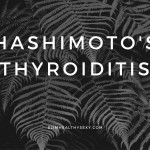
Hashimoto’s thyroiditits is a fancy name for an autoimmune disease that primarily attacks your thyroid. But while it is attacking your thyroid as if it was a foreign object in your body, it also causes a multitude of symptoms as in the following:
- Extreme fatigue
- Weight gain
- Hair Loss
- Dry skin
- Sensitivity to heat or cold
- Sore throat
- Headaches
- Aches and pains
Just to name a few.
When people ask me what having Hashimoto’s is like I tell them it is like having strep throat. It sucks!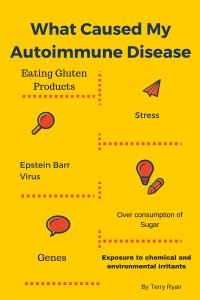
What causes Hashimoto’s thyroiditis? No one knows for sure but fingers point at a toxic environment, genetics, viruses, or the cheap and chemical laden food we have been consuming for years.
My symptoms came on gradually. I became more tired year after year. I would describe it as being tired to the bone. My hair was falling out and it became harder to keep weight off. I went to my doctor for blood tests (all came out normal), and I exercised more, but I continued to become more ill.
As the years went on, a blood test finally presented a high TSH level. TSH means thyroid-stimulating hormone. Higher the level the more hypothyroid you are. You want to be between 0.1-3.5 (I was 45 when diagnosed) however that can differ from doctor to doctor.
A conventional doctor will not prescribe a hormone replacement drug like Synthroid until your TSH is high. Otherwise, they believe they will exacerbate the disease.
The dangers of too much hormone replacement therapy (HRT) is that it will cause heart damage. That’s the last thing a doctor wants to cause, therefore, they dispense HRT with trepidation and extreme caution.
Patients are desperate for relief from their symptoms and beg their doctors to do something. They are convinced if they either take a HRT or UP their current dosage, they will be well again. Sadly, this is not the case and many people do not feel any difference in their symptoms even with drug therapy. It is a mistake to count on your HRT as the miracle cure, because there is no miracle cure.
How to reduce your symptoms with Hashimoto’s thyroiditis?
- Take your thyroid prescription as prescribed and be tested every three months to make your levels are optimal.
- Eliminate gluten, sugar, dairy, soy, and fluoride from your diet.
- Take 5k of D3 per day. Make sure it is not a gel cap that has soy as a filler.
- Take selenium per day.
- Do mild exercise like yoga, tai chi, walking.
- Eat a lot of organic veggies and fruit per day.
- Get into juicing veggies and fruit to up your intake.
- Use coconut oil to moisturize your skin. Think of your skin as a giant sponge that soaks up anything you put on it so watch the scary chemicals.
- Get your hormones tested to see if you are imbalanced in female or male hormones.
- Write down everyday in a journal what you ate, exercised or did during the day and how you feel.
- Good grief….don’t smoke or drink alcohol.
- Get enough good quality sleep. Prepare for sleep at night. Have a routine where you wind-down for the night. Take a shower, read a little, or meditate just before bed. Keep your sheets fresh and your bedroom decluttered.
As you make these changes do not expect immediate results. It will take months of gradual improvements. You are master of your body and it is YOU who is in charge of getting yourself back to optimal health. It took me years to figure this out and I am back to feeling like my old self. You can feel good again, too.
Thank you for reading.
Terry Ryan, Hashimoto’s thyroiditis patient
Here is suggested reading.
Hashimoto’s Thyroiditis by Terry Ryan
Why Do I Still Have Hashimoto’s Symptoms When My Labs Are Normal by Dr. Datis Kharrazian
Hashimoto’s Is Not Stopping Jen!

Hashimoto Thyroiditis is Not Stopping Jen!
One of my best friends, Jen, who has known me since we cruised the night clubs together many years ago, also has Hashimoto’s thyroiditis. If you don’t already know, I have been battling Hashimoto’s thyroiditis, a debilitating autoimmune disease, for ten years now and have written a book, Hashimoto’s Thyroiditis, after I was getting nowhere with traditional medical care and started my own research.  (Frustrating!) However, unlike me, Jen has been doing extremely well with dealing with her autoimmune disease. She is able to work at a very demanding job, jogs/runs almost every day, does volunteer work, makes her own wine, and travels for fun to exotic places. I was absolutely shocked this summer when instead of meeting up with her old gal pals in Upstate New York she changed her plans and met another friend to go hiking in Peru. (Here is the trip Jen took.Click Here ) Okay, she sent her husband and son as substitutes, and we did have a great time with them, but nevertheless, it wasn’t Jen. What shocked me even more than Jen picking Machu Picchu over us, is that she has
(Frustrating!) However, unlike me, Jen has been doing extremely well with dealing with her autoimmune disease. She is able to work at a very demanding job, jogs/runs almost every day, does volunteer work, makes her own wine, and travels for fun to exotic places. I was absolutely shocked this summer when instead of meeting up with her old gal pals in Upstate New York she changed her plans and met another friend to go hiking in Peru. (Here is the trip Jen took.Click Here ) Okay, she sent her husband and son as substitutes, and we did have a great time with them, but nevertheless, it wasn’t Jen. What shocked me even more than Jen picking Machu Picchu over us, is that she has  Hashimoto’s disease and she can hike for a week in Peru!!! We talked on the phone yesterday and her description of the chaotic and miserable flights to Peru from San Francisco would have put me in the hospital but she handled it with no problem. Heck, I am jealous!
Hashimoto’s disease and she can hike for a week in Peru!!! We talked on the phone yesterday and her description of the chaotic and miserable flights to Peru from San Francisco would have put me in the hospital but she handled it with no problem. Heck, I am jealous!
So, what is Jen doing that is different from the rest of the Hashimoto’s sufferers that allows her to have a normal life? I asked her probing questions as in what are you eating? What time do you go to bed? Jen says she stays away from gluten, sugar, and processed foods. I know this for a fact because years ago we were boating and came across some friends barbecuing on an island and I, dragging friends along, self-invited us to the barbecue. They were serving hotdogs, and there is nothing better than a grilled hotdog on an island in the middle of a lake on a summer day. I dove into mine but Jen turned hers down. I looked at her in shock as in how-could-you but she said, and I quote, “I don’t eat that kind of stuff.”
Now this was years before I was diagnosed with Hashimoto’s so I was totally perplexed by that statement, but then again, I was blissfully living a life that was healthy even though I was eating and drinking anything I wanted with no ill effects. Jen had already been diagnosed with Hashimoto’s and I had no idea what she was dealing with. Unfortunately, I was soon to find out. No, it’s not contagious but it is happening in epidemic proportions. I used to joke that I could start a thyroid support group because so many of my friends had thyroid problems. We compare what medicine we are taking and the dosages. I am taking 135 mcg of Tirosint and Cytomel. Most of my friends are on Synthroid. So why are so many (mostly women) suffering from autoimmune disease such as Hashimoto’s thyroiditis? We seem to be way ahead of the curve as far as other countries. My friends from England say that they know no one with Hashimoto’s and I have heard this is true in other countries, so the USA must be doing something differently. Some say it is the food we are eating. All the BGH (bovine growth hormones), the GMO’s, the fast foods, and I guess you could say the substandard foods that we are consuming in abundance. However, there are a lot of people who are consuming crappy food (excuse my language) and seem to be doing okay, and how I envy them. Then there are they thyroid experts that say that there is a genetic propensity that has to be present too for thyroid disease. Is that it? I have a genetic maker that makes me more prone to disease?
Jen said that she believes it is important to exercise and to keep busy. I too have tried to exercise with 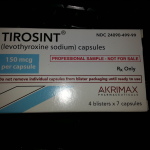 disastrous results as in having stay in bed for three days after 18 holes of golf. What I have is called post-exertion exhaustion as my body cannot recover quickly from exercise. On good days I can walk around the block but on bad days I have a tough time making it out to the mailbox. Hiking the Andes would definitely not be something I can do. Also, working a full-time job is something I am many other Hashimoto’s patients cannot do and I noticed in the Facebook support groups that some are on disability. Most of us drag ourselves through the day. I feel sorry for younger women who have Hashimoto’s disease as they have young families and are trying to do it all, as they were doing before being diagnosed. How they cope, I do not know? As far as keeping busy I do keep a pretty full schedule. I take care of an aging parent, a large house, multiple real estate holdings, and blogging websites for kicks. Sometimes when I am feeling good for a length of time, I will take on more obligations or projects only to realize I was taking on too much when I have what we Hashimoto’s sufferers call, a relapse. When that occurs I feel like lying in bed all day but I push myself to do as many chores or errands I can do that particular day. Compared to what I used to accomplish, it is now a dismal amount. I have learned to accept my physical limitations but vowed to research and try different remedies until I find a “cure.” Until then I will take one day at a time and hope for a better tomorrow.
disastrous results as in having stay in bed for three days after 18 holes of golf. What I have is called post-exertion exhaustion as my body cannot recover quickly from exercise. On good days I can walk around the block but on bad days I have a tough time making it out to the mailbox. Hiking the Andes would definitely not be something I can do. Also, working a full-time job is something I am many other Hashimoto’s patients cannot do and I noticed in the Facebook support groups that some are on disability. Most of us drag ourselves through the day. I feel sorry for younger women who have Hashimoto’s disease as they have young families and are trying to do it all, as they were doing before being diagnosed. How they cope, I do not know? As far as keeping busy I do keep a pretty full schedule. I take care of an aging parent, a large house, multiple real estate holdings, and blogging websites for kicks. Sometimes when I am feeling good for a length of time, I will take on more obligations or projects only to realize I was taking on too much when I have what we Hashimoto’s sufferers call, a relapse. When that occurs I feel like lying in bed all day but I push myself to do as many chores or errands I can do that particular day. Compared to what I used to accomplish, it is now a dismal amount. I have learned to accept my physical limitations but vowed to research and try different remedies until I find a “cure.” Until then I will take one day at a time and hope for a better tomorrow.
Some things to consider:
Enzyme replacement
D3 supplements
Eliminate SUGAR!
Skip alcohol
Reduce coffee
Meditate
Understand your disease. Read my book. Click Here
Thanks for reading!
Terry Ryan
Leaky Gut & Diabetes by Terry Ryan
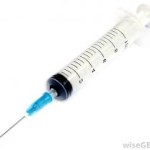
Nearly 26 million Americans have either Type I or Type II diabetes at a cost of more the $245 billion  annually. The American Diabetes Association estimates that by 2050, as many as 1 in 3 American adults will have diabetes. While the majority of diabetes research, publicity, and health care dollars focus on Type 2 diabetes and obesity, we need to pay attention to type 1 diabetes. The incidence of Type 1 diabetes (T1D) has increased significantly worldwide just in the last few decades, and it is important we focus our energy on it as well.
annually. The American Diabetes Association estimates that by 2050, as many as 1 in 3 American adults will have diabetes. While the majority of diabetes research, publicity, and health care dollars focus on Type 2 diabetes and obesity, we need to pay attention to type 1 diabetes. The incidence of Type 1 diabetes (T1D) has increased significantly worldwide just in the last few decades, and it is important we focus our energy on it as well.
Type I diabetes can occur in both adults and children and is due to destruction of the cells in the pancreas called beta cells. Diabetes can start suddenly and symptoms may include:
- Extreme thirst
- Increased urination
- Increased appetite
- Sudden weight loss
- Fatigue or lethargy
- Sudden vision changes
- Fruity odor to the breath
It is caused by the immune system attacking the pancreas, i.e. it is an autoimmune disorder. The pancreas can no longer make insulin because the beta cells have been destroyed and insulin must come from an outside source. It is a constant daily challenge for these individuals to manage their blood sugar.
Medical history shows that childhood diabetes, or Type 1 diabetes, was quite rare in several countries across the world and showed no change in incidence from 1925-1955. The 1892 edition of Osler’s Principles and Practice of Medicine mentions that only 10 patients out 35,000 treated at Johns Hopkins had diabetes (1 and 2). Massachusetts General Hospital recorded admitting and treating 172 patients with diabetes from 1824-1898, of which there were only 18 patients under the age of 20. However, an increase in the prevalence of T1D has been documented since the mid 1900’s and has been steadily increasing since then.
Compare historical findings to the latest statistics. There are three million Americans with Type 1 diabetes  with more than 15,000 children and 15,000 adults diagnosed each year. There has been a 23% increase in prevalence of Type 1 diabetes in children and teenagers between 2001 and 2009. Many argue these statistics, reasoning that it is simply better diagnostic techniques, recognition, and statistics. The topic continues under debate, but the numbers are clear. The illness is impacting more every year.
with more than 15,000 children and 15,000 adults diagnosed each year. There has been a 23% increase in prevalence of Type 1 diabetes in children and teenagers between 2001 and 2009. Many argue these statistics, reasoning that it is simply better diagnostic techniques, recognition, and statistics. The topic continues under debate, but the numbers are clear. The illness is impacting more every year.
Leaky Gut Syndrome and Type I Diabetes
For decades, medical research has been trying to understand the causes of Type I diabetes. They face many of the same challenges in understanding why the autoimmune disorder occurs as other autoimmune diseases. There have been many theories over the years and research continues to delve into the causes of T1D.
There is strong evidence coming to light that environmental products and subsequent development of digestive issues are triggering autoimmune destruction of pancreatic beta cells leading to Type I diabetes in both children and adults.
Several recent studies have now identified that altered or increased intestinal permeability (Leaky Gut Syndrome) is actually responsible for the onset of Type 1 diabetes. This altered mechanism occurs before the onset of complications, i.e. full blown destruction of the pancreatic beta cells. Animal studies showed that the altered intestinal permeability preceded the onset of diabetes by at least one month. This increase in gut permeability does not occur as the cause in Type II diabetes, but specifically to Type 1 diabetes. Human studies show that this breakdown and change in tight junctions and zonulin* is present in at least 50 % of T1D patients.
In addition to the presence of increased gut permeability prior to T1 D development, the medical journal Diabetes reported that at least half of T1D patients had an abnormal T-cell immune response to dietary wheat proteins and triggered different gene expression than Celiac Disease patients. Meaning when T1D patients were tested for the traditional Celiac Disease lab marker, tissue transglutaminase IgG and IgA, their markers were negative and many times there were no digestive symptoms like with Celiac Disease. However, when tested for other wheat peptides, their markers reacted with a positive finding. It was a completely different gene that was being triggered by wheat/gluten not measured by the standard medical marker and provoked a T-cell immune response against the pancreas. Wheat has been proven in animal studies as a trigger for T1D, but now researchers are seeing this “silent” association in human studies. In fact, the association of T1D with other autoimmune disorders, commonly Celiac Disease and Hashimotos’sthyroiditis, has been known for quite sometime. The scope has widened beyond traditional Celiac Disease markers and T1D.
Knowing that increased gut permeability precedes T1D onset and that wheat/gluten autoimmunity is present at least half the time in T1D development is powerful information. This is a huge breakthrough in understanding T1D and autoimmunity. Testing wheat/gluten autoimmunity and reactivity, increased zonulin levels, and intestinal permeability are now easily done by blood tests leaving the guess work out of the picture.
Gut Flora
Researchers are diligently studying the gut microbiome imbalances or alterations in gut flora and have found that it is clearly associated with increased gut permeability. This means that a germ, i.e. yeast or bacteria that should not be in the digestive tract, can clearly initiate Leaky Gut Syndrome. The antibiotic that was taken by a child for an upper respiratory infection, acne, or the ear infection, can trigger this gut microbiome imbalance. Combine that with the athlete who is trying to make varsity team in high school or college. Then throw in disrupted gut clocks and altered sleep-wake schedules that teenagers often experience while consuming the standard American Diet of white flour (gluten) and white sugar and lots of fast food stops after school. How about the weekend warrior athlete with the same factors? It can be the perfect storm for the development of Type 1 diabetes. <Screammmmmm>
Researchers are studying other autoimmune disorders and there is mounting evidence that several diseases follow this same change in tight junctions and zonulin function leading to Leaky Gut Syndrome and autoimmune inflammation. It also includes other disorders such as asthma, rheumatoid arthritis, lupus, inflammatory bowel disease, several types of cancers including brain and pancreatic cancer, chronic inflammation, and schizophrenia. This is similar to Celiac Disease, thyroid problems, and candida overgrowth.
Help!
There are several solutions that can be used to help support the body in the case of Type 1 diabetes. It is imperative to be tested for “wheat/gluten proteome reactivity and autoimmunity” and remove these food intolerances if present. It is absolutely vital to also include organic, fermented foods like fermented veggies or probiotics that help support beneficial gut bacteria. It is just as imperative to work on reducing the risk and consequences of Leaky Gut Syndrome. There are several compounds that help reduce this inflammatory response and reduce the risk for T1D. These include L-glutamine, probiotics, vitamin D, and Omega 3 oils.
There also is the whole aspect of helping blood sugar work better and reducing the consequences of elevated blood sugar and AGEs or Advanced Glycation End Units. No matter what age you are, if you have T1D, you have to be proactive lifelong about reducing AGEs responses. Several nutrients can help support this process:
These has been shown to protect against AGEs, but it also helps to protect T- cells that may be part of the issue for Type 1 diabetes. Because poorly controlled blood sugar damages capillaries, kidneys, eyes, nerves in anyone with Type 1 diabetes and Type 2 diabetes, as well as those who have borderline blood sugar levels, it is vital to be proactive about these concerns. A young child with T1D has a lifetime ahead of them. Let’s help protect these children and adults from further damage, or if possible, reduce the risk for the disease from occurring. Be proactive!
*Zonulin is a protein that modulates the permeability of tight junctions between cells of the wall of the digestive tract.
Special thanks to Linda J Dobberstein, DC, DACBN, DCBCN for the above information.
Terry Ryan is a health blogger and lives in Sarasota, FL with her husband, Kenan.
Is Vitamin D Really Important? by Terry Ryan

Is vitamin D really Important? You bet it is! What is vitamin D?
Vitamin D is one of the many fat-soluble vitamins important to the body. This vitamin however, is more than just a vitamin and in the body acts more like a steroid hormone. This hormone affects over 2000 genes and is found in cells throughout the entire body. These genes and cells affect many of the processes carried out daily. Our levels of Vitamin D are affected by the foods we eat, amount of sunlight exposure and supplements we take. Sunlight exposure is the best source for Vitamin D however supplements also work well to alter our levels.
- Enhances absorption of calcium & phosphorus, which helps to maintain strong bones
- Strengthens Muscles
- Immune system health, which helps to fight infections
- Anti-Cancer effects
- Prevention of the seasonal Flu
- Helps regulate blood sugar levels in the pancreas
- Improved cardiovascular function
- Protection against Autoimmune disease
- Improved mood with depression
- Periodontal Disease
- Prevention of Hypertension
- Reduces muscle aches and pains
- Aids in restful sleep
There is a BIG difference to vitamin D2 and vitamin D3. If you are looking for a whole food based Vitamin D supplement remember that Plant sources provide you with D2. The more beneficial D3 can only be had through animal-based source.
Vitamin D supplements are available in 2 forms:
- Vitamin D3 (cholecalciferol)
The natural form our body makes from sun light exposure and the form found in foods. - Vitamin D2 (ergocalciferol)
The synthetic form is derived from fungus and plant matter
Did you know?
- Preferred form of supplementation is Vitamin D3.
- As always watch out for Fillers, Additives, Binders, Artificial Flavors etc.
- Use of Ergocalciferol (D2) should be avoided if possible.
- Check the expiration date — Avoid expired products.
- If you are allergic to certain ingredients make sure they are not found in your
Here are my picks for great D3 supplements!
Please speak to your doctor about writing a script for a blood test to test for your vitamin D levels. The test will give you a range where they believe your number should be. (Labs differ in the range.)
I personally take 5k a day of D3 and my levels have improved and I like to keep the range optimal because I have an autoimmune disease. It has greatly improved my health.
Thanks for reading. Here are some books on Vitamin D for more info.
Terry Ryan
Terry Ryan is a health blogger and lives in Sarasota, FL with her husband, Kenan.
Hashimoto’s Thyroiditis
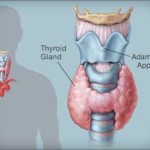 Hashimoto’s thyroiditis. Yes, that’s a mouthful. I told someone I had that once and they burst out loud laughing. I guess they found the name funny. It wasn’t funny to me or to anyone who has been diagnosed with HT but unfortunately that is what I have. What is it? It is an autoimmune disease that is attacking my thyroid and making me hypothyroid. You have heard of that, I am sure, and of all the symptoms such as :
Hashimoto’s thyroiditis. Yes, that’s a mouthful. I told someone I had that once and they burst out loud laughing. I guess they found the name funny. It wasn’t funny to me or to anyone who has been diagnosed with HT but unfortunately that is what I have. What is it? It is an autoimmune disease that is attacking my thyroid and making me hypothyroid. You have heard of that, I am sure, and of all the symptoms such as :
- Fatigue
- Brain fog
- Hair loss
- Infertility
- Dry skin
- Sore throat
- Aches and pains
- Panic attacks
- Depression
- Insomnia
It was discovered by a Japanese physician named Dr. Hakaru Hoshimoto in 1912. It occurs between eight and fifteen times more often in women than in men. Though it may occur at any age, including in children, it is most often observed in women between 30 and 60 years of age.
For years I suffered with the symptoms but went undiagnosed as having an under-active thyroid until it finally showed up on a lab test about 10 years ago. I thought now that my doctor knows what I have they can cure me. No! Sorry. That, unfortunately, is not the way it has played out.
After taking hormone replacement therapy as in the form of Armour, Synthroid and then adding Cytomel, I still wasn’t seeing any relief from my symptoms. What the heck? I remember one day after I had taken more blood work done for a checkup with my endocrinologist, my doctor called with the results. He said I was so hypothyroid that I was close to going into a coma. “You must have felt horrible. Why didn’t you call me? he said.
“Because I always feel terrible,” I replied. And I did no matter if I was on Synthroid or not on Synthroid. It may be changing the numbers on my lab tests but it wasn’t changing my fatigue or constant weight gain. I knew I needed more answers so I started to research the Internet and that is where I found most of my answers.
HT is caused by an autoimmune disease and until you take care of the cause you will not find the cure. How do you know you have HT and not just hypothyroidism? You have high antibodies. That’s right have your doctor run a test called an TPO test. If the test comes back high…you have HT.
- Now, what to do about HT.
- Take D3 as much as 10K a day.
- Take selenium and magnesium
- Do not eat gluten (It’s protein mimics the thyroid protein further causing inflammation.)
- Avoid dairy.
- Eat 10 to 15 servings of veggies and fruit per day.
- Drink lots of water.
- Eat organic as much as you can.
- Skip sugar.
To learn more about Hashimoto’s thyroiditis please read my ebook which you can order here. Hashimoto’s Thryoiditis: What is it! What causes it! How to manage it!
Thanks for reading!
Terry Ryan is a health blogger and lives in Sarasota, FL with her husband, Kenan.








 D5 Creation
D5 Creation